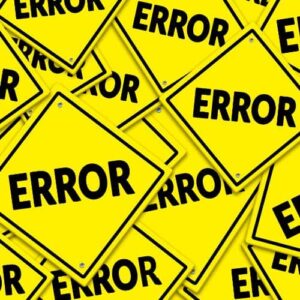When a website fails to load, it’s frustrating. However, you would need to know what happened to fix it.
The 4xx family of status codes is the one that relates to invalid or corrupt requests from the client. Let us look at the 400 Bad Request error: what is the meaning of this error, what causes it, and what steps to take to fix the issue.
What is a 400 Bad Request Error?
It is known as a 400 error or HTTP error 400. The server deduced the error as a generic client error and it is returned when the server deduced that the error doesn’t fall in any of the other status code categories.
400 Bad Request error has to do with the submitted request from the client before it is processed by the server.
What Causes the HTTP 400 Bad Request Error?
Various root causes can activate the 400 Bad Request error and is not specific to any particular browser or OS (operating system), the fixes do changes slightly.
1. URL String Syntax Error
A poorly written URL, faulty syntax, or a URL containing invalid characters can all result in HTTP error 400.
This is very easy to achieve by mistake and can occur when a URL is encoded wrongly. The following URL is an example of a URL that contains characters that the server is unable to process, resulting in a 400 Bad Request error.
https://websiteredesignexpert.com/%%
Note the extra % character immediately after the URL. This is how it resulted in the Chrome browser with the ” 400 Bad Request “. An illegal character can trigger a 400 Bad request error.
2. Corrupted Browser Cookies & Cache
The 400 Bad Request error might occur even if the URL is 100% valid due to corrupted files in the browser cache or issues with expired/corrupted browser cookies.
When attempting to access the admin area of your WordPress site after your previous log-in, you may have received a 400 Bad Request error. That’s because the cookie’s handling of your login authentication data may have become corrupted, preventing you from being successfully authenticated as a genuine user with admin access. The connection will then be rejected, and a 400 Bad Request error will be returned.
3. DNS Lookup Cache
When DNS data stored locally is out of sync with registered DNS information, the 400 Bad Requests can occur.
All domain names are IP address aliases. An IP address can be thought of like a phone number that is “always dialing” a specific server you want to connect to. When you first visit a website, a process is known as “name resolution” occurs, in which the domain name is resolved to the server’s precise IP address.
These details are saved locally on your computer in the local DNS cache to speed up the name resolution process, which means the name resolution procedure does not have to be done for every visit to a given website.
4. File Size Too Large
When you try to upload a file to a website that is too large for the upload request to be fulfilled, you may receive a 400 Bad Request. This is tied directly to the server’s file size limit, which will vary depending on how it is configured.
Till now, we’ve only looked at the 400 Bad Request errors as a result of client-side errors.
5. Generic Server Error
This error can also be caused by server-side problems. A 400 status code, for example, could indicate a general server failure, a server bug, or other undefined momentary issues.
If this happens when you make a connection to a third-party website, it’s out of your control. Your best bet is to try reloading the browser and checking back at regular intervals to see if the problem has been resolved by the site’s administrators.
Try loading the webpage in various browsers to see if the problem is server-side. If you want to go all out, try it on a different machine/device to rule out any system-specific issues.
It’s most certainly a server-side issue if you can’t access the site using other browsers, computers, operating systems, or other devices. If you’d like, you can contact the site’s owner and tell them what operating system, browser, and version you were using when the problem occurred.
400 Bad Request Error: What Does It Look Like?
The majority of 400 Bad Requests are caused by client-side faults. In the Chrome browser, we’ve previously seen what a 400 Bad Request error looks like.
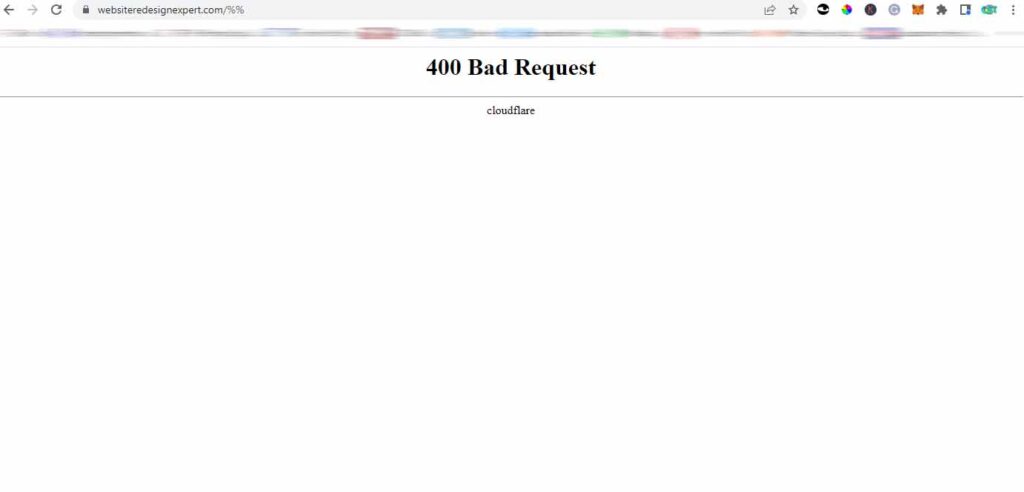
As you can see, all browsers respond with a generic and unhelpful 400 status code. It appears like you’re on your own in trying to solve the problem. Because the browser window is completely blank in Firefox and Safari, it’s impossible to tell if a 400 Bad Request error has occurred!
However, we’ve put up a list of easy methods to help you resolve the 400 Bad Request problem. In the following section, we’ll take a deeper look at each of these.
400 Bad Request (Glossary):
Due to incorrect syntax, invalid request message framing, or misleading request routing, the server was unable to interpret (understand) the request received by the client, resulting in a 400 Bad Request Error.
How to Fix 400 Bad Request Error
To diagnose and correct 400 Bad Requests, follow the methods provided in this section.
The following are some of the suggested solutions:
Before diving into the various methods for resolving the 400 Bad Request problem, you should be aware that several of them require flushing locally cached data.
True enough, there would be considerably fewer connection error troubles if your computer didn’t store any files or data at all. However, the advantages of caching files/data are well known, and the web browsing experience would undoubtedly suffer if browsers did not employ caching mechanisms.
It all boils down to a trade-off between optimization and user experience, with websites attempting to load as rapidly as possible yet occasionally succumbing to problems like a 400 Bad Request with no notice.
1. Check the Submitted URL
Let’s start with the most obvious cause, the URL string itself, because this is one of the most prevalent causes of a 400 Bad Request error. When manually entering a URL into a browser, it is quite easy to include unnecessary characters.
Make sure the domain name and the page you’re trying to reach are spelled and entered correctly. Make sure they’re separated by forwarding slashes as well. If the URL includes special characters, double-check that they’ve been encoded properly and are valid URL characters.
Using an online URL encoder/decoder for long URLs may be easier and less error-prone. These kinds of tools should also be able to detect prohibited characters in URLs automatically.
Try accessing the URL again in the browser after you’re confident it’s correct. If the 400 Bad Request problem persists, it’s time to clean your cache!
2. Clear Browser Cache
If any locally cached website files are corrupted, instead of the expected website content, a 400 Bad Request error will be issued.
This covers all of the files that a website requires to function properly, such as:
Text/config files
HTML
Text/config files
CSS
Files with data (XML, JSON)
When you first visit a website, the browser saves these files locally on your computer.
The browser cache must be cleared to remedy this.
In Chrome, pick More Tools > Clear Browsing Data from the popup menu by clicking the three-dotted icon in the right-hand corner.
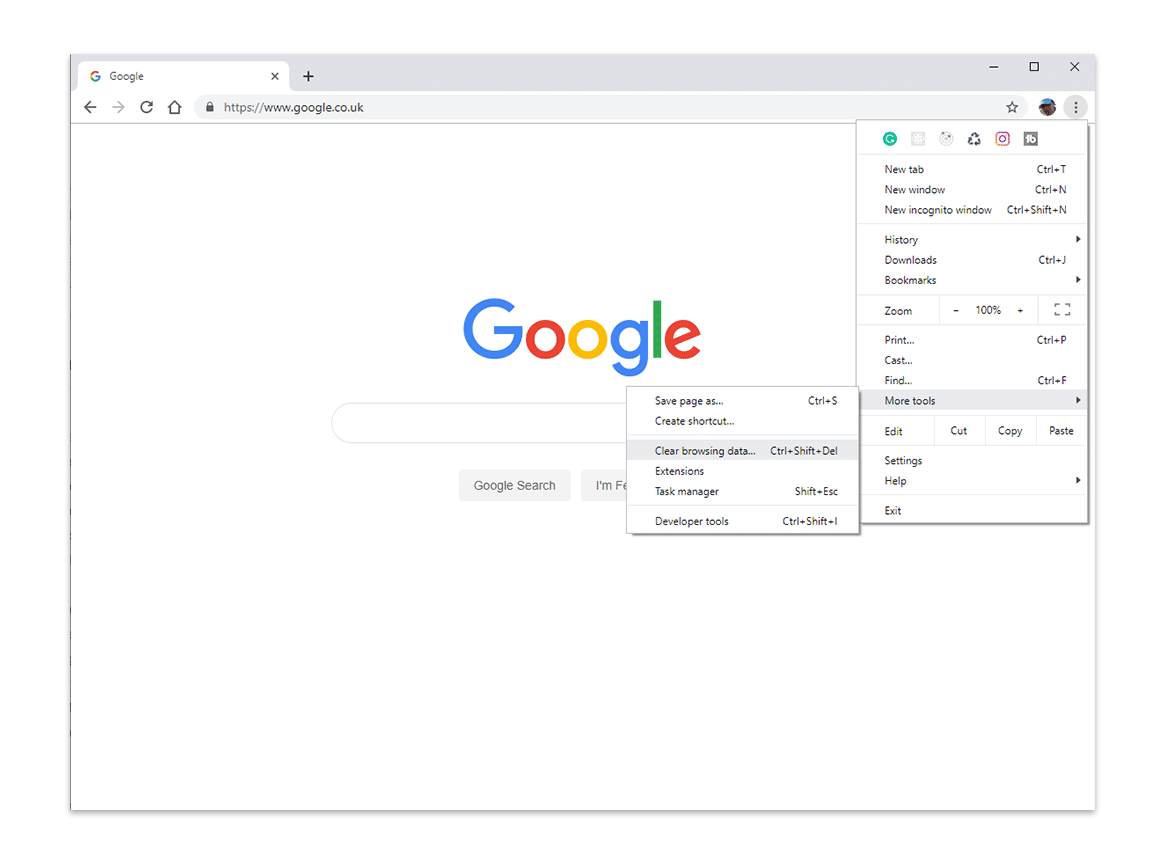
The Clear Browsing Data window will appear. Make sure that the Cached pictures and files option is selected, and then click the Clear data button to clear the browser cache.
You can also use the Time range dropdown to delete recent files for a certain period. However, we recommend deleting all locally stored files by selecting the All-time option to ensure that all potentially corrupted files are gone.
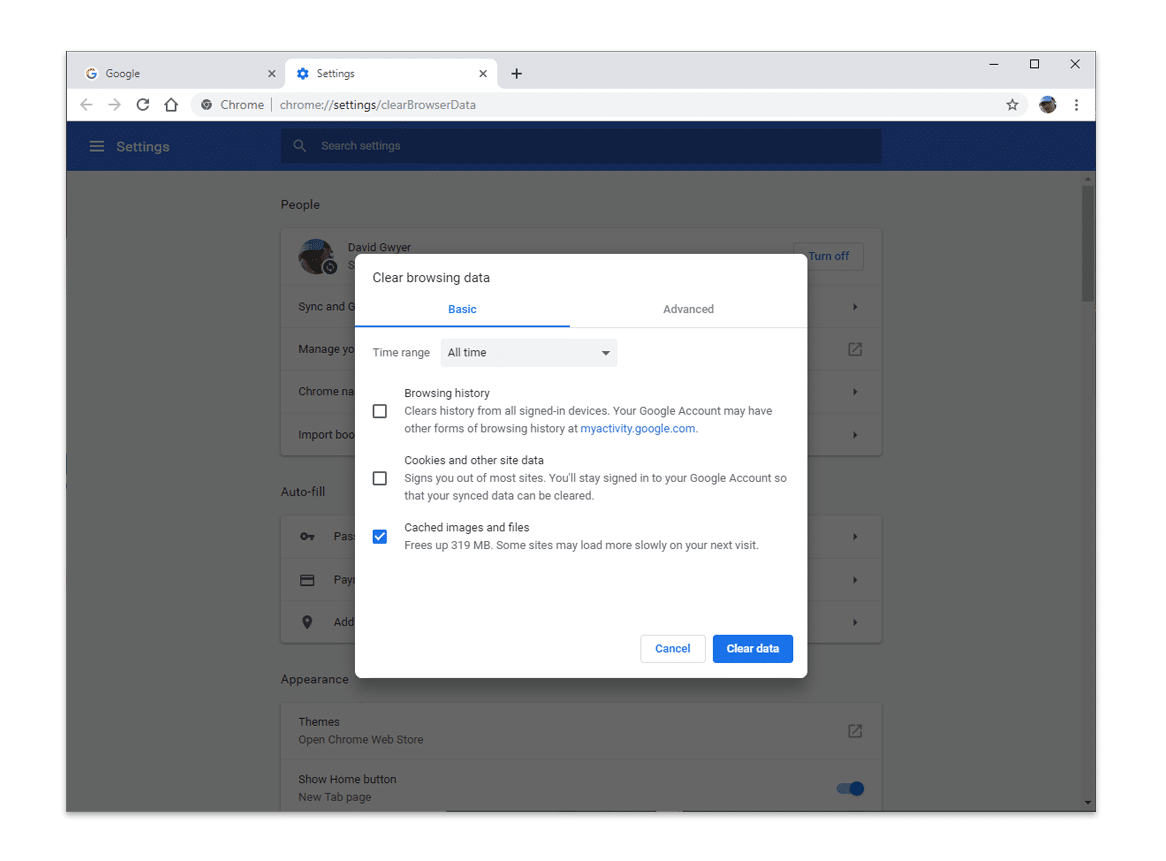
3. Clear Browser Cookies
If clearing the cache in your browser didn’t work, it’s time to erase the cookies as well. Hundreds of distinct cookies might be used by a single website. Just one of them may have expired or become corrupted, resulting in a 400 Bad Request.
To clear your cookies in Chrome, click the three-dot icon in the top-right corner and select More Tools > Clear Browsing Data from the popup menu.
To erase all current website cookies, check the Cookies and other site data box and pick All time for the date range option.
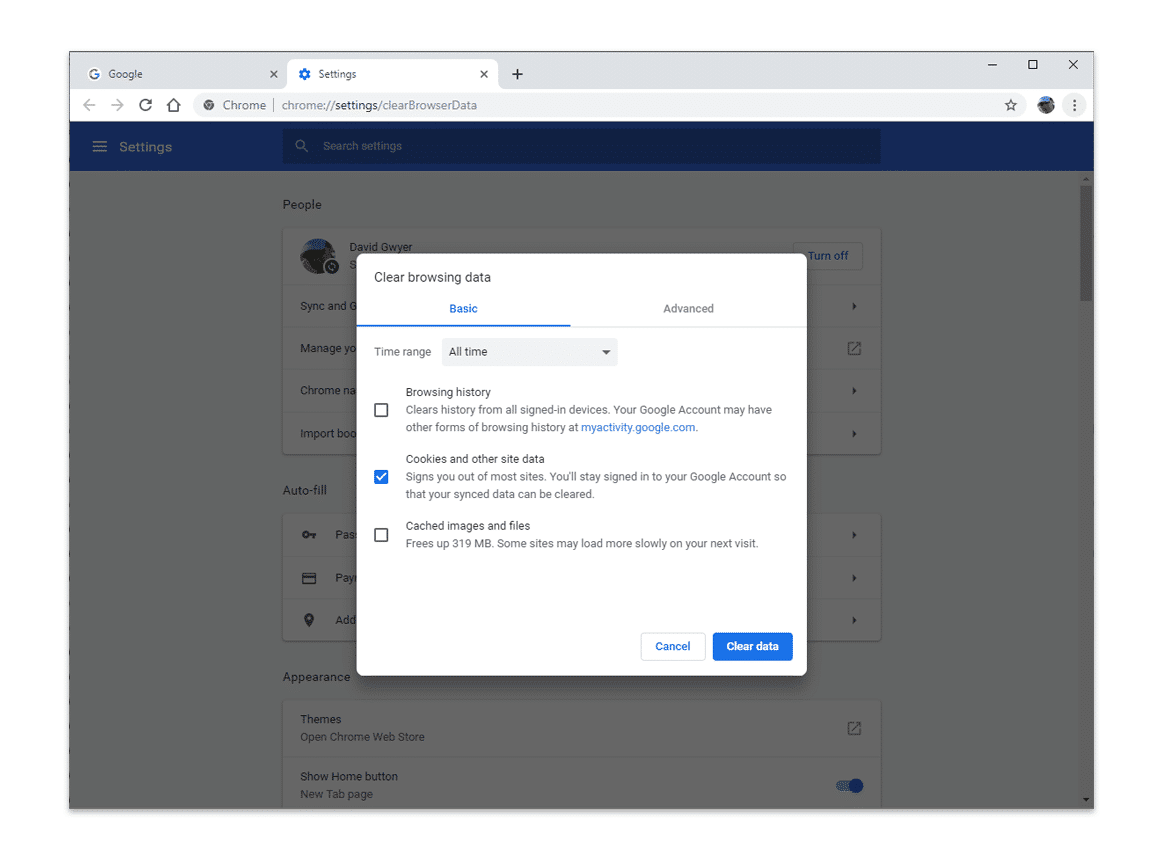
After that, try loading the website that gave you a 400 Bad Request error. If the site uses cookies, deleting them from your browser can help, as the problem is frequently caused by corrupt or expired cookies.
4. File Upload Exceeds Server Limit
You’ll get a 400 Bad Request error if you try to upload a file to a website that exceeds the server’s file size restriction.
You can try it out by first uploading a smaller file. If this works, the original file was probably too huge, and you’ll need to find a way to shrink it before re-uploading it.
This can vary depending on the sort of file you’re trying to upload, however, numerous internet services can assist you with compressing huge photos, video, and audio files.
5. Clear DNS Cache
Another common reason for a 400 Bad Request is corrupted or out-of-date local DNS lookup data.
The operating system, not the browser, stores local DNS data.
6. Deactivate Browser Extensions
If you have any browser extensions installed that influence website cookie, they may be the source of the problem. Before attempting to connect to the website again, momentarily disable them to see if it makes a difference.
You may not have considered this as a possibility, but if you’ve exhausted all other choices, it’s certainly worth a go.
Summary
If you’re getting a 400 Bad Request error, there are a few things you may do to try to fix the problem.
A 400 Bad Request is almost always triggered by a client-side error caused by the sent request to the server or a local cache issue. Anyone with a basic understanding of technology can execute the solutions mentioned in this article. You should be able to reactivate your website in no time!
A 400 Bad Request status code, on the other hand, can sometimes indicate a general server problem. This can be immediately identified by running the given site through its tests on several devices. If you suspect a server-side error, the only thing you can do is continue trying to load the site at regular intervals and contact the site administrator.


